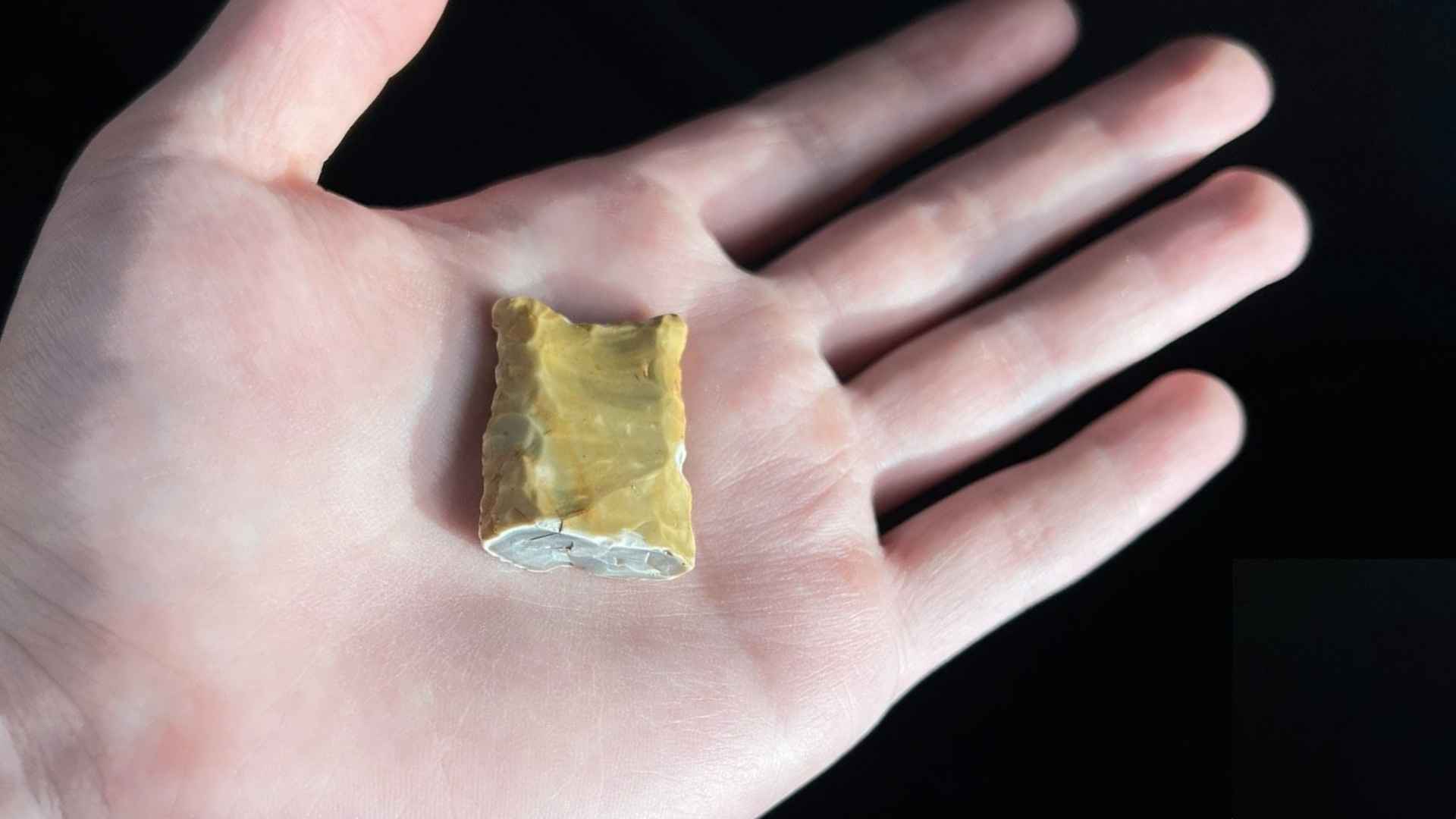An ordinary search for shark teeth ends with a 12,000‑year‑old surprise. Daniel Sawyer’s weekend hobby of beachcombing near High Island delivered more than sea glass. The Texas visitor spotted a stone shard in the shell beds beside the famed “Lonely House,” three hours from his home. Within minutes social‑media sleuths were calling it the broken base of a Paleoindian Clovis point—one of North America’s oldest tool types.
Curious? So was Sawyer. He took the fragment to Facebook, where amateur archaeologists all but cheered. Yet confirmation required an expert eye.
Why this broken Clovis base counts as a once‑in‑a‑generation coastal discovery
Alan Slade, lithic analyst at the Texas Archaeological Research Laboratory, examined photos and agreed: the piece is almost certainly a fluted Clovis point fashioned 13,300–12,700 years ago. Rarity is the headline here; Clovis points turn up infrequently even on formal digs, and coastal examples on the upper Texas Gulf are scarcer still—the last well‑documented Galveston County specimen surfaced in 1987.
Why the excitement? That slender flute along the point’s center is hall‑of‑fame technology. It helped early hunters haft the blade to a spear shaft, spreading across the Lower 48 in a prehistoric blink.
| Detail | Number or note |
|---|---|
| Documented statewide finds | ≈1,250 |
| Jefferson County coastal finds | 150+ |
| Galveston County coastal finds | 2 (including Sawyer’s) |
| Typical age range | 13,300–12,700 years |
The fragment’s dark‑blue core and tan patina hint it rested in sandy gravel until waves rolled it ashore, perhaps after last winter’s storms. Edges show recent breakage, but the ears were dinged in antiquity—likely during repeated sharpening long ago.
How to report a possible Clovis point and help Texas archaeologists
Thinking, “Could I spot one of these?” First, keep your eyes on shell banks after high tide. If a fluted tool pops out, follow these steps:
- Photograph the object in place.
- Note the GPS location or nearest landmark.
- Contact a local museum, historical commission, or the Texas Archaeological Research Laboratory.
- Avoid further damage—do not clean or glue pieces together.
Remember, artifacts belong to history before they belong to us. Slade’s statewide survey depends on responsible reporting, and each new point refines the map of early human movement across the Gulf shelf.
Sawyer’s sharp eye reminds every beach stroller that the past still washes up with the tide. Whether the missing half of his point lies buried nearby or offshore, the discovery pushes the clock of coastal Texas back more than 12 millennia—and invites the rest of us to look down, just in case.

